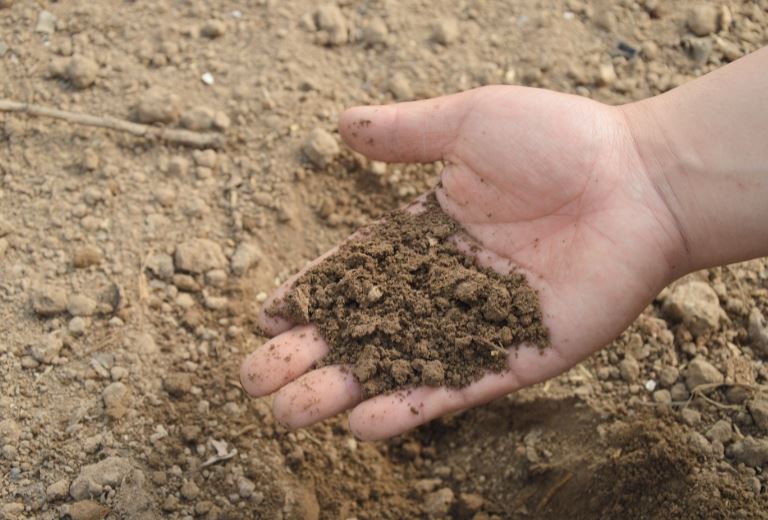So you don’t get your hopes up, this acoustic story doesn’t offer any accompanying audio/acoustic files, i.e., I couldn’t find the sound of dirt.
In any event, there’s still an interesting story in an April 10, 2023 news item on phys.org,
U.K. and Australian ecologists have used audio technology to record different types of sounds in the soils of a degraded and restored forest to indicate the health of ecosystems.
Non-invasive acoustic monitoring has great potential for scientists to gather long-term information on species and their abundance, says Flinders University [Australia] researcher Dr. Jake Robinson, who conducted the study while at the University of Sheffield in England.
…

An April 8, 2023 Flinders University press release, which originated the news item, delves into the researcher’s work, Note: Links have been removed,
“Eco-acoustics can measure the health lf landscapes affected by farming, mining and deforestation but can also monitor their recovery following revegetation,” he says.
“From earthworms and plant roots to shifting soils and other underground activity, these subtle sounds were stronger and more diverse in healthy soils – once background noise was blocked out.”
The subterranean study used special microphones to collect almost 200 sound samples, each about three minutes long, from soil samples collected in restored and cleared forests in South Yorkshire, England.
“Like underwater and above-ground acoustic monitoring, below-ground biodiversity monitoring using eco-acoustics has great potential,” says Flinders University co-author, Associate Professor Martin Breed.
Since joining Flinders University, Dr Robinson has released his first book, entitled Invisible Friends (DOI: 10.53061/NZYJ2969) [emphasis mine], which covers his core research into ‘how microbes in the environment shape our lives and the world around us’.
Now a researcher in restoration genomics at the College of Science and Engineering at Flinders University, the new book examines the powerful role invisible microbes play in ecology, immunology, psychology, forensics and even architecture.
“Instead of considering microbes the bane of our life, as we have done during the global pandemic, we should appreciate the many benefits they bring in keeping plants animals, and ourselves, alive.”
In another new article, Dr Robinson and colleagues call for a return to ‘nature play’ for children [emphasis mine] to expose their developing immune systems to a diverse array of microbes at a young age for better long-term health outcomes.
“Early childhood settings should optimise both outdoor and indoor environments for enhanced exposure to diverse microbiomes for social, cognitive and physiological health,” the researchers say.
“It’s important to remember that healthy soils feed the air with these diverse microbes,” Dr Robinson adds.
It seems Robinson has gone on a publicity blitz, academic style, for his book. There’s a May 22, 2023 essay by Robinson, Carlos Abrahams (Senior Lecturer in Environmental Biology – Director of Bioacoustics, Nottingham Trent University); and Martin Breed (Associate Professor in Biology, Flinders University) on the Conversation, Note: A link has been removed,
Nurturing a forest ecosystem back to life after it’s been logged is not always easy.
It can take a lot of hard work and careful monitoring to ensure biodiversity thrives again. But monitoring biodiversity can be costly, intrusive and resource-intensive. That’s where ecological acoustic survey methods, or “ecoacoustics”, come into play.
Indeed, the planet sings. Think of birds calling, bats echolocating, tree leaves fluttering in the breeze, frogs croaking and bush crickets stridulating. We live in a euphonious theatre of life.
Even the creatures in the soil beneath our feet emit unique vibrations as they navigate through the earth to commute, hunt, feed and mate.
…
Robinson has published three papers within five months of each other, in addition to the book, which seems like heavy output to me.
First, here’s a link to and a citation for the education paper,
Optimising Early Childhood Educational Settings for Health Using Nature-Based Solutions: The Microbiome Aspect by Jake M. Robinson and Alexia Barrable. Educ. Sci. 2023, 13 (2), 211 DOI: https://doi.org/10.3390/educsci13020211
Published: 16 February 2023
This is an open access paper.
For these two links and citations, the articles seem to be very closely linked.,
The sound of restored soil: Measuring soil biodiversity in a forest restoration chronosequence with ecoacoustics by Jake M. Robinson, Martin F. Breed, Carlos Abrahams. doi: https://doi.org/10.1101/2023.01.23.525240 Posted January 23, 2023
The sound of restored soil: using ecoacoustics to measure soil biodiversity in a temperate forest restoration context by Jake M. Robinson, Martin F. Breed, Carlos Abrahams. Restoration Ecology, Online Version of Record before inclusion in an issue e13934 DOI: https://doi.org/10.1111/rec.13934 First published: 22 May 2023
Both links lead to open access papers.
Finally, there’s the book,
Invisible Friends; How Microbes Shape Our Lives and the World Around Us by Jake Robinson. Pelagic Publishing, 2022. ISBN 9781784274337 DOI: 10.53061/NZYJ2969
This you have to pay for.
For those would would like to hear something from nature, I have a May 27, 2022 posting, The sound of the mushroom. Enjoy!